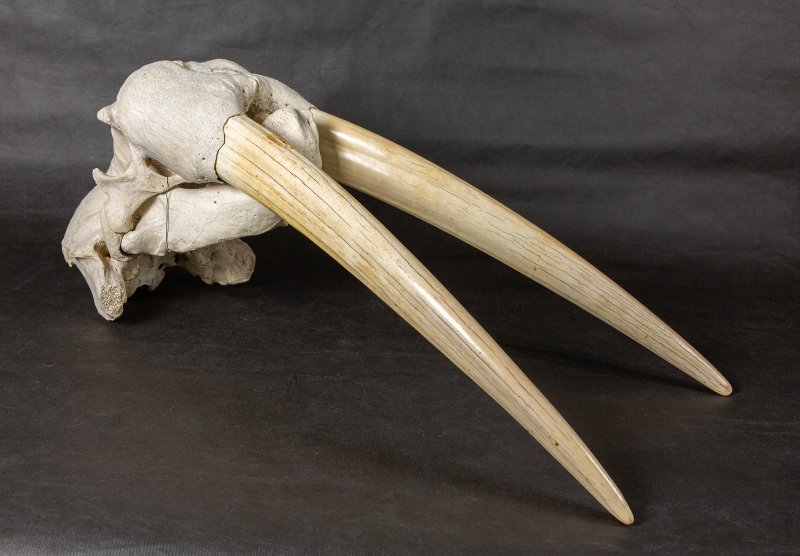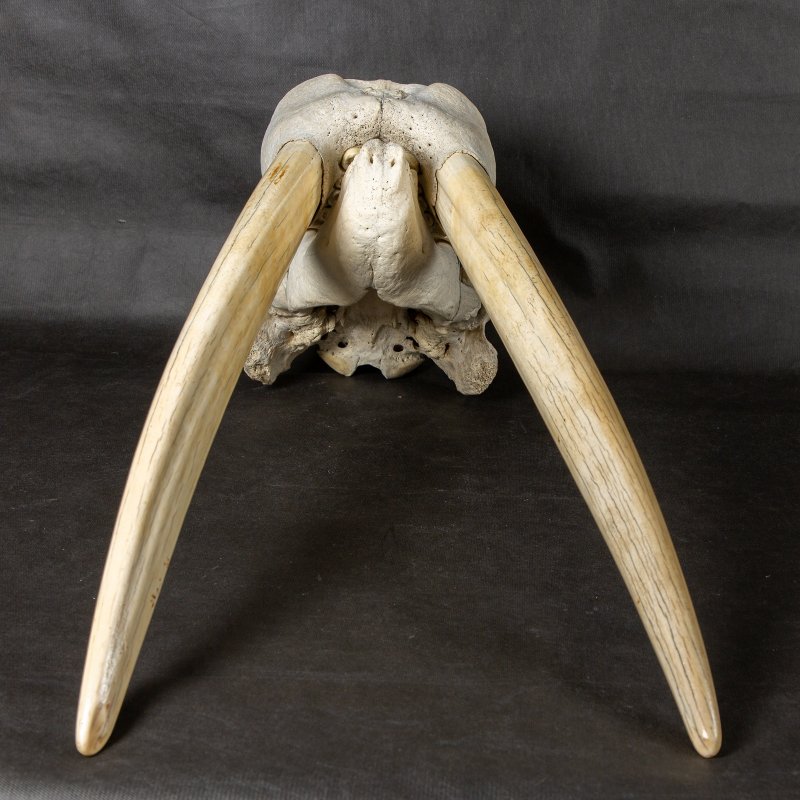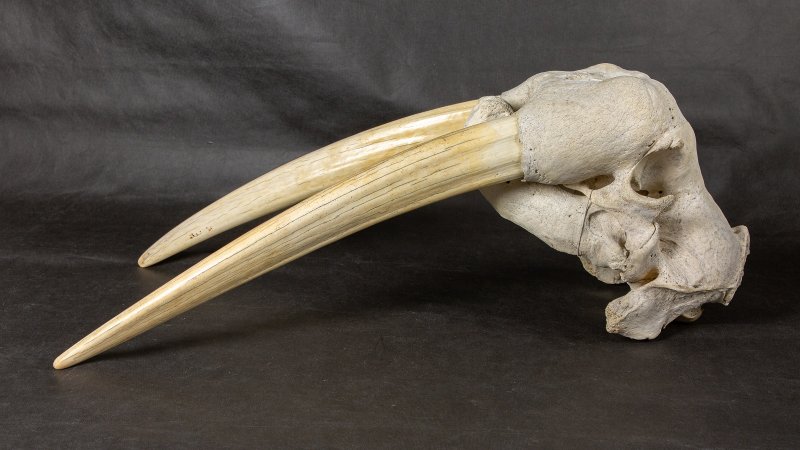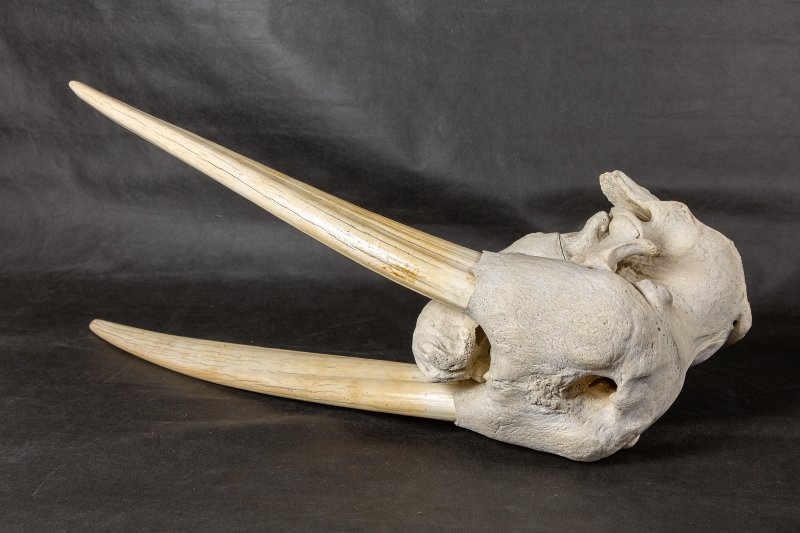2 May 2023
New arrival – walrus skull
(Odobenus rosmarus Linnaeus, 1758)
The
osteological collection of the museum has been replenished with a new exhibit.
Arkady Anatolyevich Kibalchich donated to the museum the skull of an adult male
walrus, which he himself caught in 1985 in Chukotka. Arkady Anatolyevich is a
famous zoologist, a former employee of the marine mammal laboratory of VNIRO
(All-Union Scientific Research Institute of Fisheries and Oceanography), and a
specialist in walruses. He is a candidate of biological sciences. He defended
his dissertation on the topic “Biology of reproduction and natural reserves of
the Pacific walrus” in 1984.
The walrus
(Odobenus rosmarus Linnaeus, 1758) is one of the largest representatives of
pinnipeds, second only to elephant seals in body size among pinnipeds. The
ranges of these species do not overlap, meaning the walrus is the largest
pinniped in its habitat.
The most
characteristic feature of the walrus is its long tusks. These are elongated
fangs that are present in both sexes and can reach a length of 1 m and weigh up
to 5.4 kg. The tusks are slightly longer and thicker on males, who use them for
fighting. Males with the largest tusks usually dominate the social group. The
tusks are also used to form and support holes in the ice and help walruses
climb out of the water onto the ice. The tusks may also be used to search for
food on the bottom.
According
to the latest estimate, based on the results of a Russian-American census
conducted in 1990 and repeated in 2006, the current population size of the
Pacific walrus is up to 200 thousand individuals. According to Russian-American
censuses conducted in 2013-2017, using the genetic method of repeated captures,
the number of Pacific walruses currently amounts to 256,434 walruses.
Most
Pacific walruses spend the summer north of the Bering Strait, in the Chukchi
Sea along the northern coast of eastern Siberia, near Wrangel Island, in the
Beaufort Sea along the northern coast of Alaska, and are also found in waters
between these places. A small number of males are found in the summer in the
Gulf of Anadyr, on the southern coast of the Chukotka Peninsula, and also in
Bristol Bay. In spring and autumn they concentrate from the western coast of
Alaska to the Gulf of Anadyr. They winter in the southern parts of the Bering
Sea, along the eastern coast of Siberia south to the northern Kamchatka
Peninsula, and along the southern coast of Alaska.




Комментарии могут оставлять только зарегистрированные пользователи










